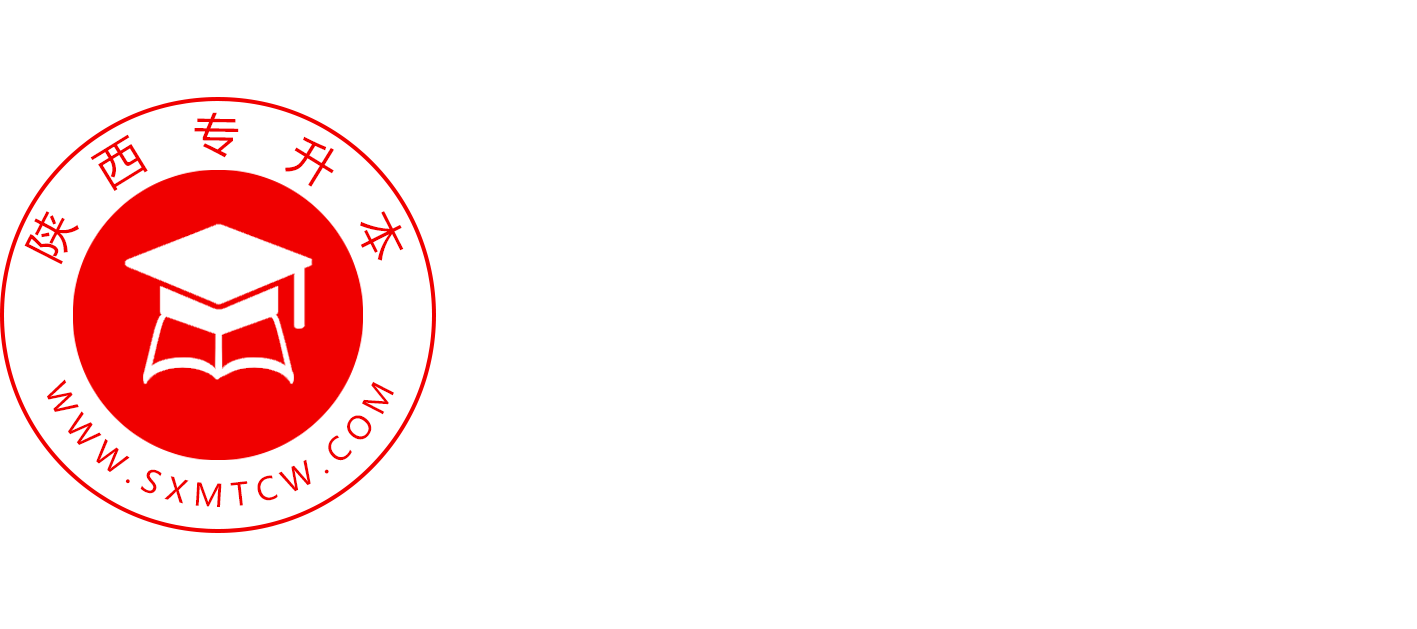
小程序在线做题
扫码即可轻松在线做题

院校专业查询
扫码即可一键查询院校专业

考前冲刺题
扫码即可获取考前冲刺题
2020年陕西专升本小学教育类英语测试试题
【导读】陕西专升本小学教育类考试科目公共基础课考试科目有大学英语和大学语文,今天陕西专升本给考生整理了2020年陕西专升本小学教育类英语测试试题,希望对考生有帮助。

2020年陕西专升本小学教育类英语测试试题
PartⅠ. Listening Comprehension
Section A: 10 Statements
Directions: In this section, you will hear 10 statements. Each sentence will be spoken just once. The sentence you hear will not be written out for you. After you hear each sentence, read the four choices in your test paper, marked, A, B, C, and D, and decide which one is closest in meaning to the sentence you heard. Then, on your Answer Sheet, find the number of the question and fill in the space that corresponds to the letter of answer you have chosen.
1. A. She should have her ears examined.
B. She must listen to her teacher.
C. She didn’t pay attention to her teacher’s opinion.
D. She always does what the teacher tells her.
2. A. The plane left at 12:30 A. M.
B. The plane left at 12:00 noon.
C. The plane left at 11:30 P. M.
D. The plane left at 1:00 P. M.
3. A. Pat went to the party with John.
B. John was invited to Pat’s party.
C. John would not go to the party.
D. Pat did not go to the party.
4. A. The tour was worth the time but not the money.
B. The tour was not worth the time or the money.
C. The tour was worth both the time and the money.
D. The tour was not worth the time
5. A. I wrote you a letter.
B. I called you.
C. I let her call you.
D. I went to see you.
6. A. There was plenty of time to get there.
B. We needed more time to get there.
C. We had to get there in time.
D. We had a good time when we got there.
7. A. She failed the test.
B. She needed more time to finish the test.
C. In spite of her studying she found the test difficult.
D. She did well on the test because she studied hard.
8. A. Despite its being rush hour, there was little traffic.
B. There was not much traffic because it was rush hour.
C. There was a lot of traffic because it was rush hour.
D. Rush hour is before dark.
9. A. Although she has a scholarship, Ellen cannot attend the University.
B. Ellen cannot get a scholarship until the University accepts her.
C. Ellen attends the University on a scholarship.
D. If Ellen gets a scholarship, she can attend the University.
10. A. We got good seats although we were late.
B. We did not get good seats because we were late.
C. We were too late, but we got good seats.
D. We got good seats because we arrived on time.
Section B: Conversations
Directions: In this section, you will hear 10 short conversations. At the end of each conversation, a question will be asked about what was said. The conversation and the question will be spoken only once. After each conversation, there will be a pause. During the pause, you must read the four choices marked A, B, C, and D, and decide which is the best answer. Then mark the corresponding letter on the Answer Sheet with a single line through the center.
11. A. Finish the work.
B. Wait until next morning.
C. Go home.
D. Have a rest there.
12. A. The woman has chosen a color.
B. The woman doesn’t care which color is chosen.
C. The woman is concerned about the color.
D. The woman has chosen a different color.
13. A. At the stationer’s.
B. In the department store.
C. At the bank.
D. In the classroom.
14. A. After the woman.
B. Ahead of the woman.
C. At the same time as the woman.
D. Later than the woman.
15. A. She is easy-going.
B. She is an ill-natured person.
C. She looks mean, but deep down she is kind.
D. She is strict with her students.
16. A. The man himself.
B. The man’s mother.
C. The cleaner.
D. The woman.
17. A. $20.58.
B. $58.00.
C. $78.58.
D. $100.58.
18. A. At the restaurant.
B. At the man’s clothes store.
C. In the cinema.
D. In a supermarket.
19. A. Interviewer and interviewee.
B. Manger and clerk.
C. Shop-girl and consumer.
D. Landlady and tenant.
20. A. One hour.
B. An hour and a half.
C. Half an hour.
D. Three quarters.
Section C: Spot Dictation
Directions: In this part, you will hear a passage three times. The passage is printed on your test paper with 10 blanks. Listen carefully and fill in the blanks with the missing words you have just heard.
More and more people today are realizing the importance of 21 physical exercise.
There are many different forms of exercise to 22 different tastes. For example, those who enjoy 23 sports may take up ball games. If they 24 exercise alone, they can have a run or take a walk in the morning or in the evening. 25 , people can go swimming in the summer and go skating in the winter. 26 , no matter what their interests are, people can always find one or more sports that are, people can always find one or more sports that are suitable to them.
However, the 27 of physical exercise must be chosen carefully. More harm than good will 28 if people choose the wrong form of exercise. For the aged, Qigong or Tai ji Boxing will suit them better than competitive sports. Those who have little spare time may have a regular run in the morning. Only if the kind of exercise is chosen 29 and performed regularly, will it 30 their health, work and study.
Part Ⅱ. Reading Comprehension
Directions: There are 4 passages in this part. Each of the first three passages is followed by some questions or unfinished statements. For each of them there are four choices marked A), B), C) and D). You should decide on the best choice. Answer the questions on the fourth passage.
Questions 31 to 35 are based on the following passage.
People are making more and more demands on the world’s natural resources. If babies born in 1991 live for 80 years, the human population of the world may be anything from twice to three times the present total by 2070. In other words, they will have to share what is left of the earth’s resources with between 10 and 15 billion other people. But hopefully there will be a significant decrease in the growth of population. What if this does not happen? The answer is that by the time before the babies born in 1991 reach the age of 40 they could be sharing resources with as many as 10 billion other people.
Limiting the pollution of water and the atmosphere, controlling the output of the chemicals that may be causing global warming the climate change, and eating less meat may go some way to help, but can anyone seriously imagine that these are going to solve the problems of the “baby class”of ’ 91?
There is no getting away from the fact that people are responsible for the present state of the world, and only people can solve the problems. The decisions have to be taken by people as members of national and local governments; as leaders and decision-makers in industry; as scientists and technologists; as professional engineers and designers; as religious leaders and as individual citizens.
31. Which of the following can be the title for this passage?
A. Making More Demands on the Natural Resources.
B. Limiting the Pollution of Air and Water.
C. Reducing the World Population.
D. Saving the Babies of ’91?
32. What is meant by “the problems of the ‘baby class’ of ’91”?
A. A large number of babies will be born after 1991.
B. Babies born in 1991 won’t live a long life.
C. The children of 1991 are not given good education.
D. The world will be over populated in 40 years.
33. This short passage is probably taken from() .
A. a news report
B. a science fiction
C. an article by a medical worker
D. a government report
34. It is implied in the second paragraph that ().
A. limiting the pollution is of the great importance
B. not all the people know how to save our planet
C. our planet is becoming warmer because of the pollution
D. we should eat less so that more people can be fed
35. Which of the following is NOT mentioned in the last paragraph as people responsible for the present state of the world?
A. Officials
B. Industrialists.
C. Businessmen.
D. Scientists.
Questions 36 to 40 are based on the following passage.
Accidents are the major cause of death for all young people under 35. They are the fourth most frequent cause of death for all age groups in the U. S. —fourth only to heart disease, cancer and stroke. Each year thousands of Americans lost their lives in accidents, and thousands are permanently crippled.
By far the most common types of home accidents are falls. Each year over ten thousand Americans meet death in this way, within the four walls of their home, or in yards around their house. Nine out of ten of the victims are over 65. But people of all ages experience serious injuries as a result of home falls. It is impossible to guess how many injuries result from falls, but they must run into millions.
Falls can be a problem for all ages. In the process of growing up, children or teenagers often will fall. Fortunately their bodies are springy, so they may suffer only skinned knees, bumps and bruises. But in an older person, the same fall may cause a broken arm, leg, and hip or other injury that requires hospitalization or medical care. As a person grows older, he may not fall any more often, but the result usually are more serious and may even be fatal.
Preschool children are often killed by falls from open windows and porches. Their normal curiosity and the urge to climb lead them to dangerous heights. Therefore, it is a parent’s duty to keep small children away from stairways, open windows and porch railing. Gates, bars, and other means of protection should be used whenever possible.
Adults fall because they don’t look where they are going. Running or taking two steps at a time invites falls. In trying to save an extra trip up the stairs by loading his arms with bundles or boxes that keep him from seeing where he is going, an adult may find it safer to make an extra trip.
36. The most common type of home accidents is() .
A. choking
B. falling
C. drowning
D. burning
37. In this passage the author states that ().
A. seat belts save lives
B. most accidents are avoidable
C. heart disease is the greatest killer of Americans
D. the death rate from work-related injuries is increasing
38. Most victims of falls are at least 65 years of age because ().
A. old people fall more often than younger people
B. bones become stiff and brittle with age
C. elderly people take unnecessary risks
D. old people don’t look where they are going as a result of poor eyesight
39. Adults are injured in falls as a result of() .
A. boldness(勇敢)
B. dizziness(晕眩)
C. carelessness
D. weakness
40. From the page we may conclude that() .
A. as a cause of death in America, accidents rank first
B. the risk of accidents increases with a person’s age
C. the head is injured more than any other part of the body
D. most people do not realize how serious falls can be
Questions 41 to 45 are based on the following passage.
Each year millions of people suffer from the effect of alcohol and drug abuse, getting into illness, crime and death.
In the United States alone, 10 to 12 million men and women and their loved ones and families suffer from alcohol. Additional millions abuse alcohol at great cost in health and in lost productivity.
In Canada, it is said, “Alcohol increases business—for hospitals, ambulance drivers, doctors, and nurses.”
Alcohol abuse and dangerous drugs have swept through Europe. Soviet culture, too, is paying enormous social and economic costs.
Developing nations are bothered by drup problems—both ancient and modern. In this part of the world hundreds of millions request doctor to ease their miseries and problems in life.
These methods of coping are unhealthy solutions! It is time we understood why and found the way out of today’s greatest social problem surrounding this supposedly advanced 20th century.
41. This passage is primarily about ().
A. the worldwide drug and alcohol abuse
B. the greatest social problem in Europe
C. the methods of coping with alcohol abuse
D. the enormous cost in health and in lost productivity
42. How many people in the United States have suffered form alcohol abuse?
A. About 5%~6% of the whole population.
B. About one fourth of the population.
C. 10 to 12 million people and their families.
D. Hundreds of millions.
43. Which of the following Statements is NOT true?
A. Alcohol and drug abuse is becoming a burning question.
B. The author suggests that the public cope with alcohol and drug abuse.
C. The alcohol abuse has damaged health.
D. Addicting agents come into being to treat the addicts.
44. The author strongly implies that the public should() .
A. reveal the relationship of heavy drinking and illness
B. help drug users to ease their miseries
C. take measures to improve alcohol business
D. seek for proper solutions to drug problems in time
45. According to the author, the drug abuse problem in Soviet Union() .
A. is costing more money than in Europe
B. cannot be solved because it cost too much money
C. becomes a threat to society
D. is also severe
以上就是“2020年陕西专升本小学教育类英语测试试题”的全部内容,如果大家还想知道更多关于陕西专升本的相关资讯,敬请关注陕西专升本,如果有其他问题还可以【在线咨询】,或加入【考生交流群】,直接与资深老师进行交流、答疑。

陕西专升本声明
(一)由于考试政策等各方面情况的不断调整与变化,本网站所提供的考试信息仅供参考,请以权威部门公布的正式信息为准。
(二)本网站在文章内容来源出处标注为其他平台的稿件均为转载稿,免费转载出于非商业性学习目的,版权归原作者所有。如您对内容、版权等问题存在异议请于我们联系,我们会及时处理。
文章来源于网络,如有侵权,请联系删除
点击继续阅读>>
扫码登录
扫码关注“陕西专升本”微信公众号
即可查看余下内容


















 新手指南
新手指南  咨考老师
咨考老师  考前必刷题
考前必刷题  微信公众号
微信公众号  免试政策
免试政策  历年真题
历年真题 




